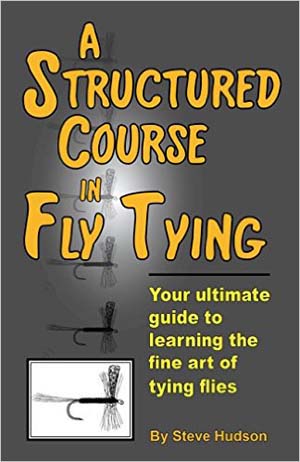[dropcap]M[/dropcap]ost fly tying books for beginners start off with a picture of a hook, naming its parts, images and names of tying tool essentials and then it’s off to the races with tying flies. The specialness of the reader being completely comfortable with the maneuvers that will be called on over and over are not emphasized enough. Most beginner tying books do not build on one maneuver being mastered at a time – tending more toward frustrating than learning.
 A short description of Hudson’s book is ‘completely comprehensible and not just for beginners’
A short description of Hudson’s book is ‘completely comprehensible and not just for beginners’
Each chapter of Hudson’s book addresses, in commonly understood language, the essential details of each maneuver, why it is done a certain way, what the likely mistakes look like and the consequences of mistakes. The supporting illustrations are superior.
The book’s bonus is a brief discussion of how each fly you just tied can be fished and how to swim it
The reader is not tying a fly pattern until page 66. Those early pages go over vises, tying tools, hooks (finally a comprehensible explanation), thread (finally a ‘structured’ explanation) and even head cement.
Each chapter builds on what was just priorly learned
Throughout the book there is a structured and thorough explanation of how to tie each new fly and how to manage each new material. Materials are completely explained: dubbing, tailing, adding weight, marabou feathers, ribbing, wing cases, hackle, wings, combining materials, dry flies, wet flies and beyond the basics.
[information]
Steve Hudson’s book is 282 pages of detailed instruction. You can purchase A Structured Course in Fly Tying here . . .
[/information]







